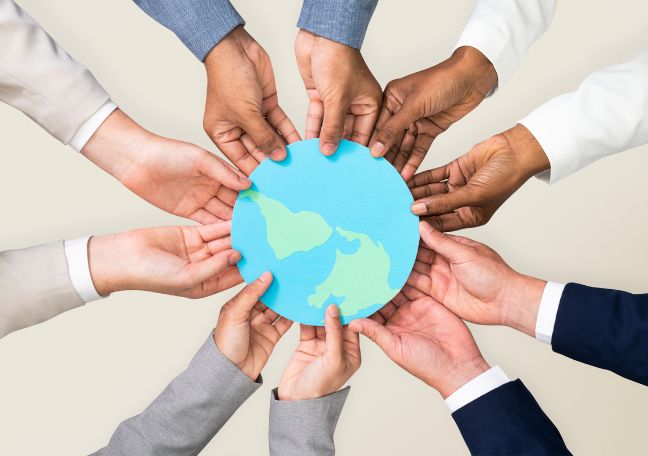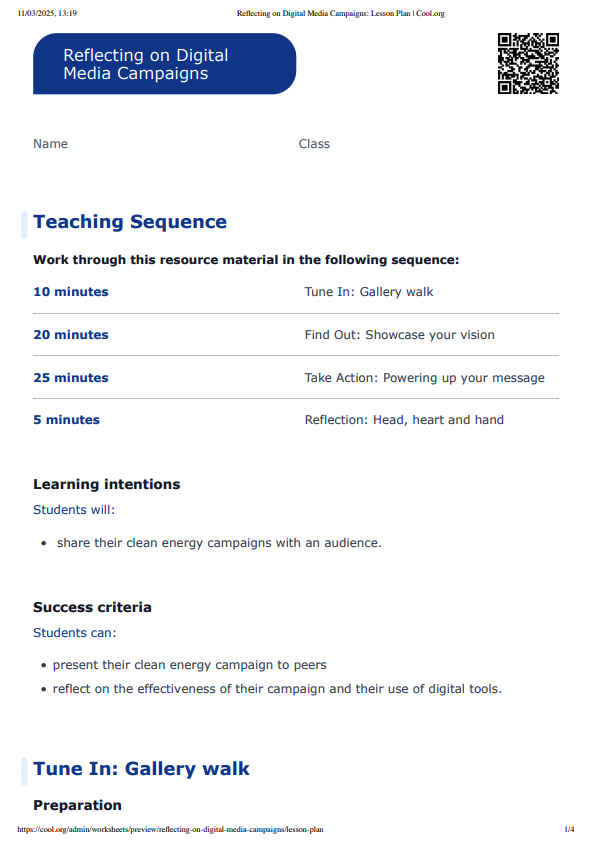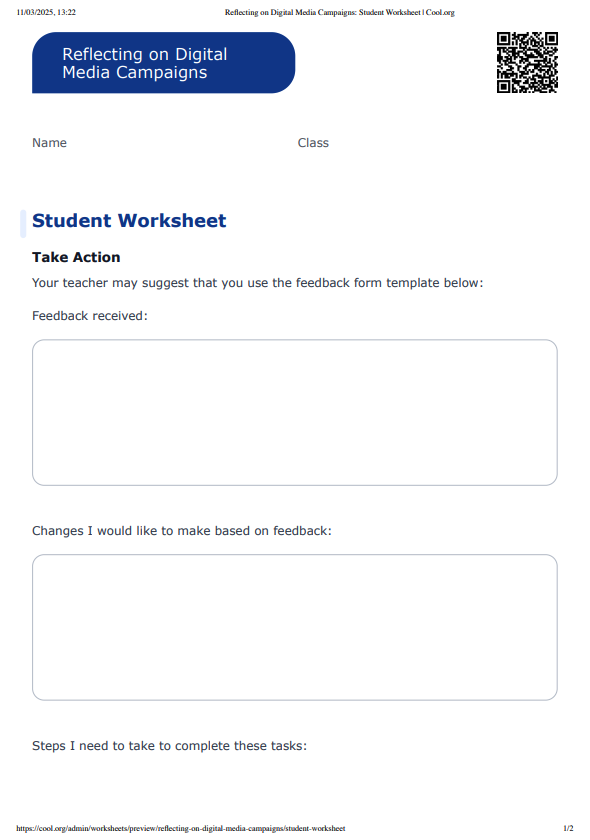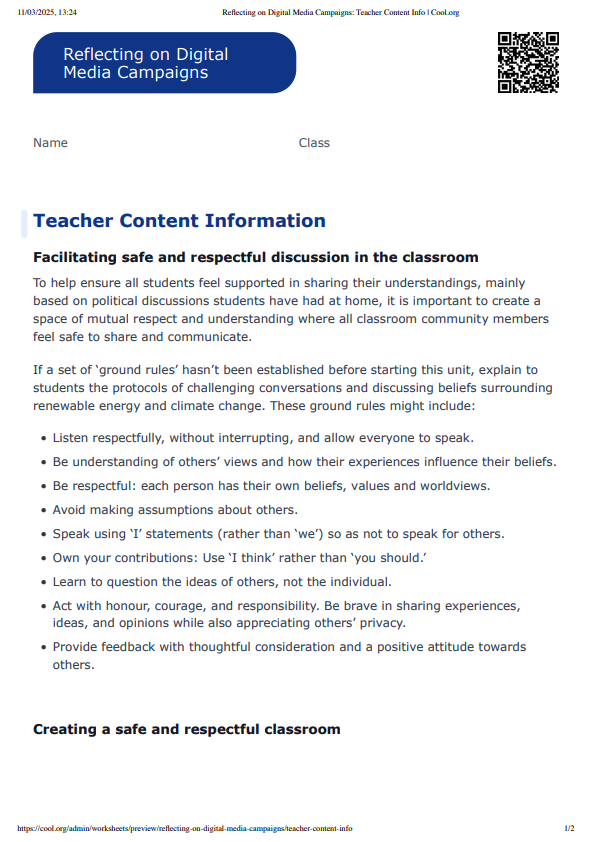Lesson summary
Students will present their clean energy digital campaigns to their peers, communicating their intent, creative choices, and effective use of digital tools to portray their message. Students will evaluate their campaigns both critically and creatively via communicative and reflective peer feedback before making changes to improve their overall campaign.
Learning intentions
Students will:
- share their clean energy campaigns with an audience.
Success criteria
Students can:
- present their clean energy campaign to peers
- reflect on the effectiveness of their campaign and their use of digital tools.
Lesson guides and printables
Curriculum links
Select your curriculum from the options below.
Lesson details
Skills
This lesson is designed to build students’ competencies in the following skills:
- adaptability
- creative thinking
- critical thinking
- communication
- digital literacy
- problem-solving
- reflection
- social skills
Curriculum Mapping
Australian Curriculum (v9.0) content description:
Year 5 and 6, Digital Technologies
Students learn to:
- select and use appropriate digital tools effectively to create, locate and communicate content, applying common conventions (AC9TDI6P07)
- select and use appropriate digital tools effectively to share content online, plan tasks and collaborate on projects, demonstrating agreed behaviours (AC9TDI6P08).
Relevant parts of Year 5 and 6 Digital Technology achievement standards: Students select and use appropriate digital tools effectively to plan, locate and share content, and to collaborate, applying agreed conventions and behaviours.
NSW Syllabus outcomes:
A student:
- uses design processes to create, evaluate and modify designed solutions (ST3-DDT-01).
General capabilities: Critical and Creative Thinking, Digital Literacy, Literacy, Personal and Social Capability
Cross-curriculum priority: Sustainability
Level of teacher scaffolding: Low - this lesson is student-led and requires minimal teacher scaffolding.
UN Sustainable Development Goals
- Target 4.7: By 2030, ensure that all learners acquire the knowledge and skills needed to promote sustainable development, including, among others, through education for sustainable development and sustainable lifestyles, human rights, gender equality, promotion of a culture of peace and non-violence, global citizenship and appreciation of cultural diversity and of culture’s contribution to sustainable development.
Resources Required
- Device capable of displaying audiovisual material
- Student devices
- Student Worksheet
Additional Info
Cool.org thanks our philanthropic funder, Boundless Earth for their generous contributions and collaboration in creating these resources.




Welcome back!
Don't have an account yet?
Log in with:
Create your free Cool.org account.
Many of our resources are free, with an option to upgrade to Cool+ for premium content.
Already have an account?
Sign up with:
By signing up you accept Cool.org's Terms and Conditions(Opens in new tab) and Privacy Policy(Opens in new tab).